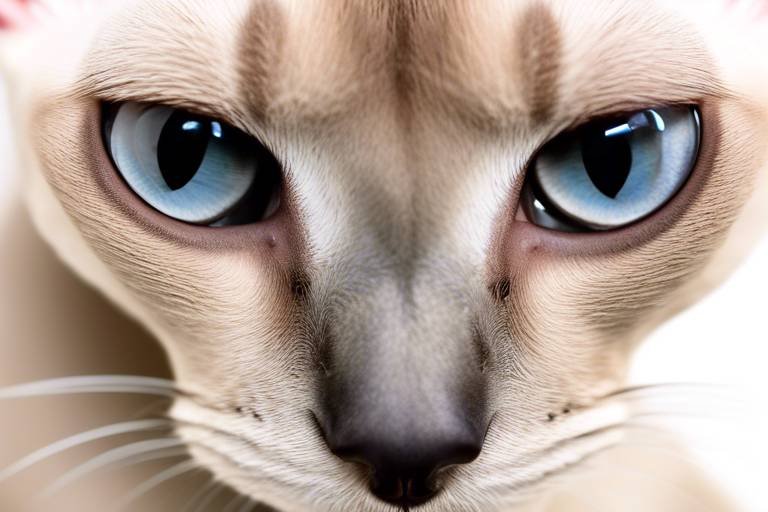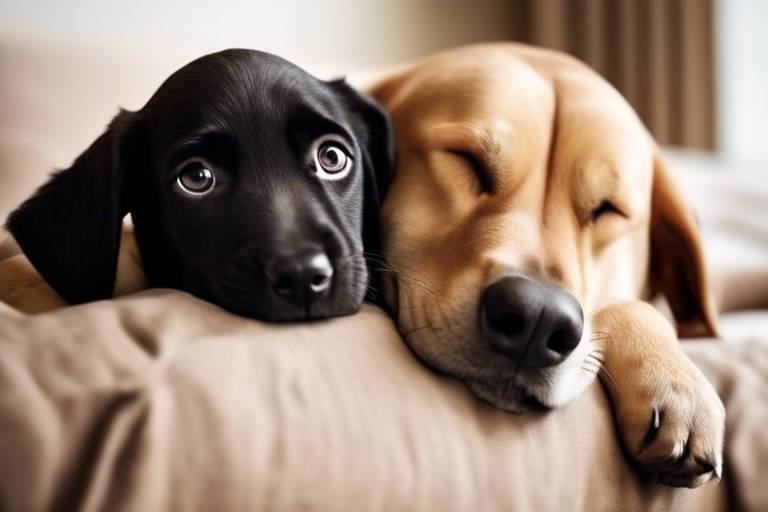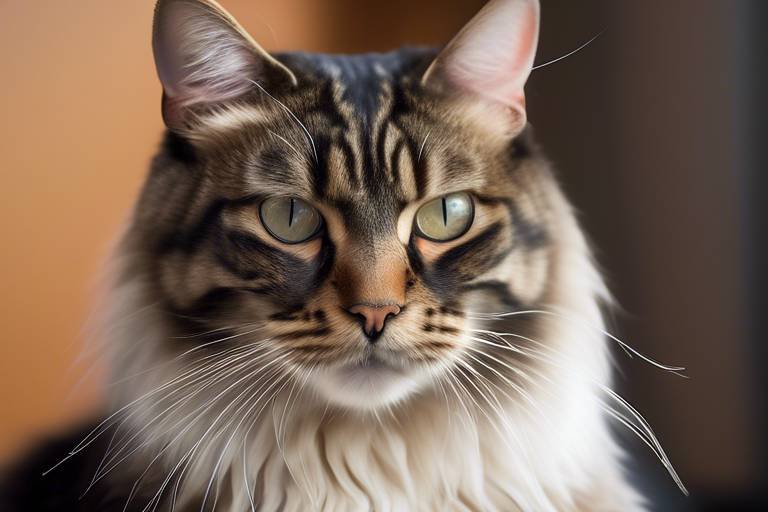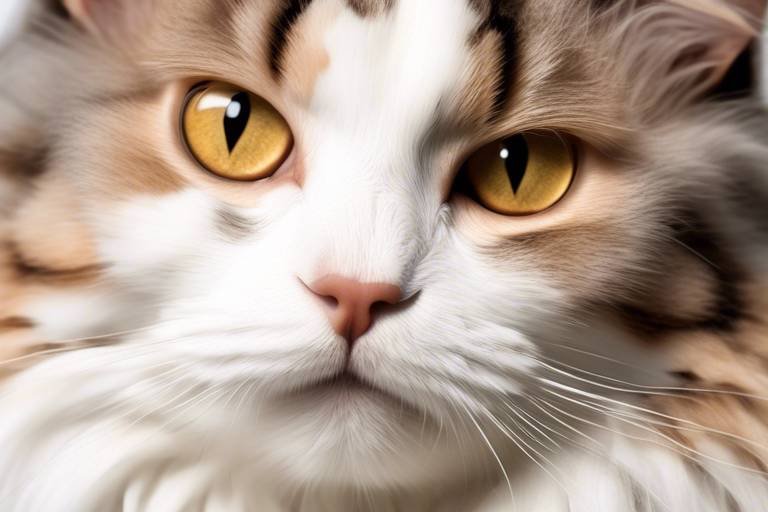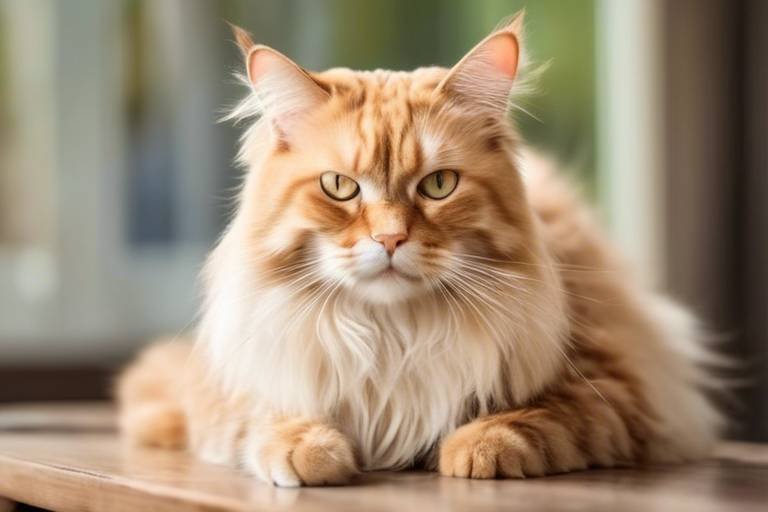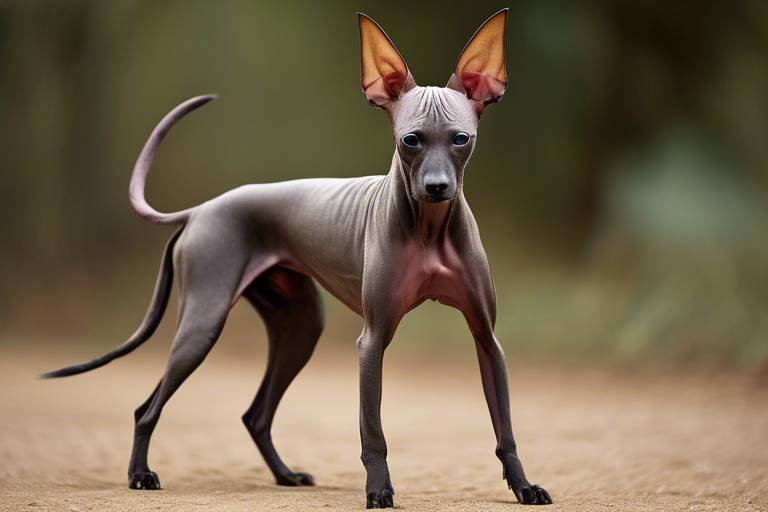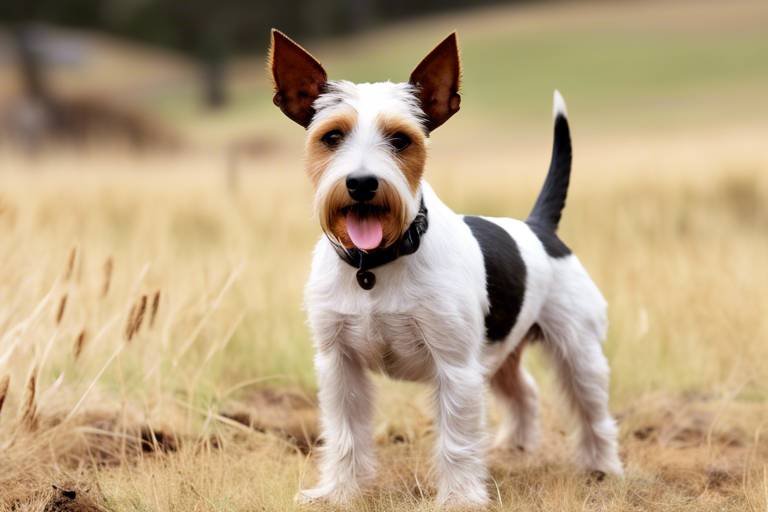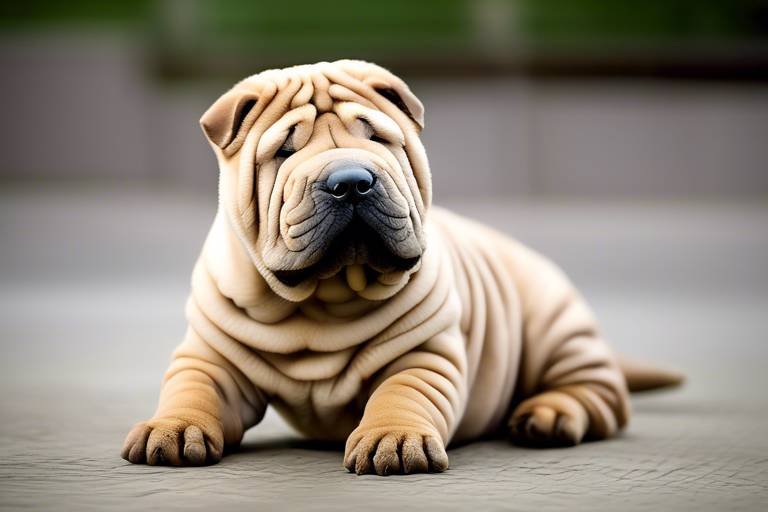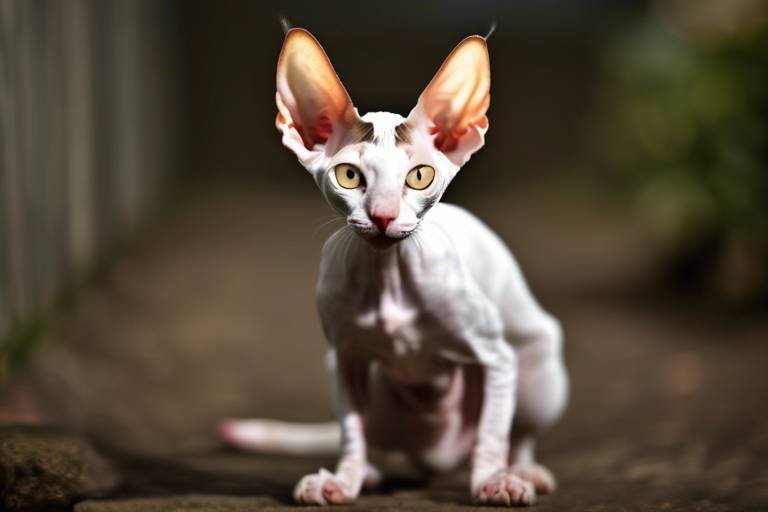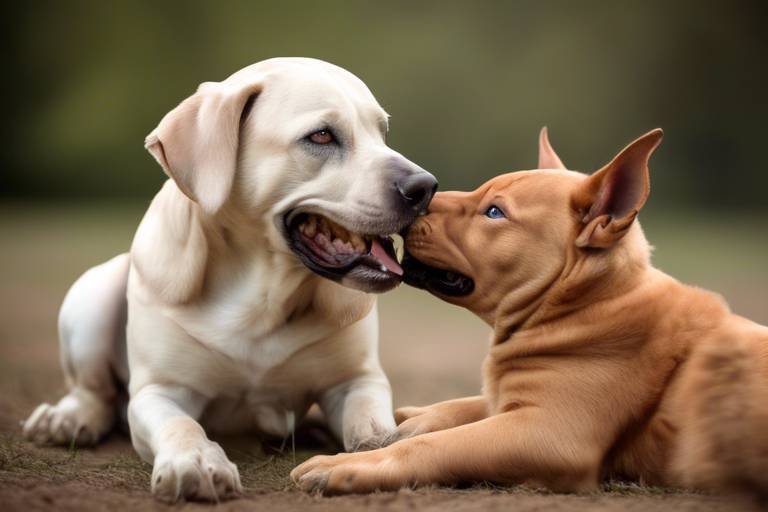The Characteristics of the Alaskan Husky
The Alaskan Husky is a breed that embodies the spirit of the wild and the beauty of the Arctic. Known for their incredible strength, endurance, and striking appearance, these dogs have captured the hearts of many across the globe. With a unique blend of physical attributes and a friendly temperament, the Alaskan Husky is not just a working dog; they can also make a fantastic family pet. In this article, we will delve into the various traits that make the Alaskan Husky a remarkable breed, from their physical characteristics to their grooming needs and health considerations.
Alaskan Huskies are truly a sight to behold. They boast a thick double coat that keeps them warm in frigid temperatures, along with erect ears that stand tall, giving them an alert and attentive look. Their expressive eyes, often blue or brown, can convey a myriad of emotions, from playfulness to curiosity. Typically, these dogs range in size from 35 to 65 pounds, with a build that is both muscular and agile, allowing them to excel in endurance activities.
When it comes to temperament, the Alaskan Husky is known for being friendly and outgoing. These dogs thrive on companionship and are generally good with children and other animals, making them excellent family pets. Their playful nature means they are always ready for a game of fetch or a romp in the yard. However, it’s important to remember that their friendly demeanor also means they can be quite social, so they may not be the best watchdogs. Instead, they are more likely to greet strangers with a wagging tail than a growl.
One of the standout characteristics of the Alaskan Husky is their high energy levels. These dogs are not couch potatoes; they require regular exercise and mental stimulation to keep them happy and healthy. If you enjoy outdoor activities like running, hiking, or skiing, an Alaskan Husky might be the perfect companion for you. Their playful demeanor and enthusiasm for adventure make them ideal for active families who love spending time outdoors.
Daily exercise is crucial for Alaskan Huskies to prevent boredom and destructive behavior. Without sufficient physical activity, they can become restless and may resort to digging or chewing on furniture. Activities such as:
- Running
- Hiking
- Agility training
are not only beneficial for their physical health but also provide the mental stimulation they crave. A tired Husky is a happy Husky!
Early socialization is another important aspect of raising an Alaskan Husky. Exposing them to various environments, people, and other animals helps them develop into well-rounded dogs. The more experiences they have during their formative months, the better they will adapt as adults. This can include trips to the dog park, visits to friends’ houses, or even just walks around the neighborhood.
Originally bred for sledding, Alaskan Huskies possess remarkable endurance and strength. Their working abilities make them valuable in various tasks, including dog sledding and search-and-rescue operations. These dogs are not only strong but also intelligent, which makes them quick learners. If you’re considering training your Alaskan Husky, be prepared for a rewarding experience as they thrive on challenges and learning new skills.
Maintaining an Alaskan Husky's coat requires regular grooming, especially during shedding seasons. Understanding their grooming needs ensures they remain healthy and comfortable. Regular brushing helps to manage their shedding and keeps their coat looking its best. During shedding seasons, which occur twice a year, you may find yourself brushing them more frequently to keep up with the fur they shed.
As mentioned, Alaskan Huskies are known to shed heavily twice a year. This means that during these periods, you should expect to brush them more often—ideally every few days. Regular grooming helps manage shedding and keeps their coat in optimal condition, preventing mats and tangles.
Bathing should be done sparingly, as excessive washing can strip their coat of natural oils. Generally, a good brushing routine is often sufficient to keep them clean and healthy. If your Husky gets particularly dirty, a bath every few months should do the trick. Just be mindful to use a dog-specific shampoo that won’t irritate their skin.
Like all breeds, Alaskan Huskies are prone to specific health issues. Regular veterinary check-ups and a healthy diet are essential for their overall well-being. Being aware of potential health concerns can help you take proactive steps to ensure your furry friend remains healthy throughout their life.
Some common health concerns in Alaskan Huskies include:
- Hip dysplasia
- Eye disorders
Awareness of these conditions can help owners take preventive measures, including regular vet visits and maintaining a healthy lifestyle for their dogs.
A balanced diet is crucial for maintaining an Alaskan Husky's energy levels and overall health. Owners should consult with veterinarians to determine the best nutritional plan for their dog. High-quality dog food that meets their energy needs, combined with the right amount of exercise, will keep them in tip-top shape.
Q: Are Alaskan Huskies good family pets?
A: Yes, they are known for their friendly nature and typically get along well with children and other pets.
Q: How much exercise do Alaskan Huskies need?
A: They require at least an hour of exercise daily to stay happy and healthy.
Q: Do Alaskan Huskies shed a lot?
A: Yes, they shed heavily twice a year, requiring regular grooming during those times.
Q: What are common health issues in Alaskan Huskies?
A: Common health concerns include hip dysplasia and eye disorders, so regular vet check-ups are essential.
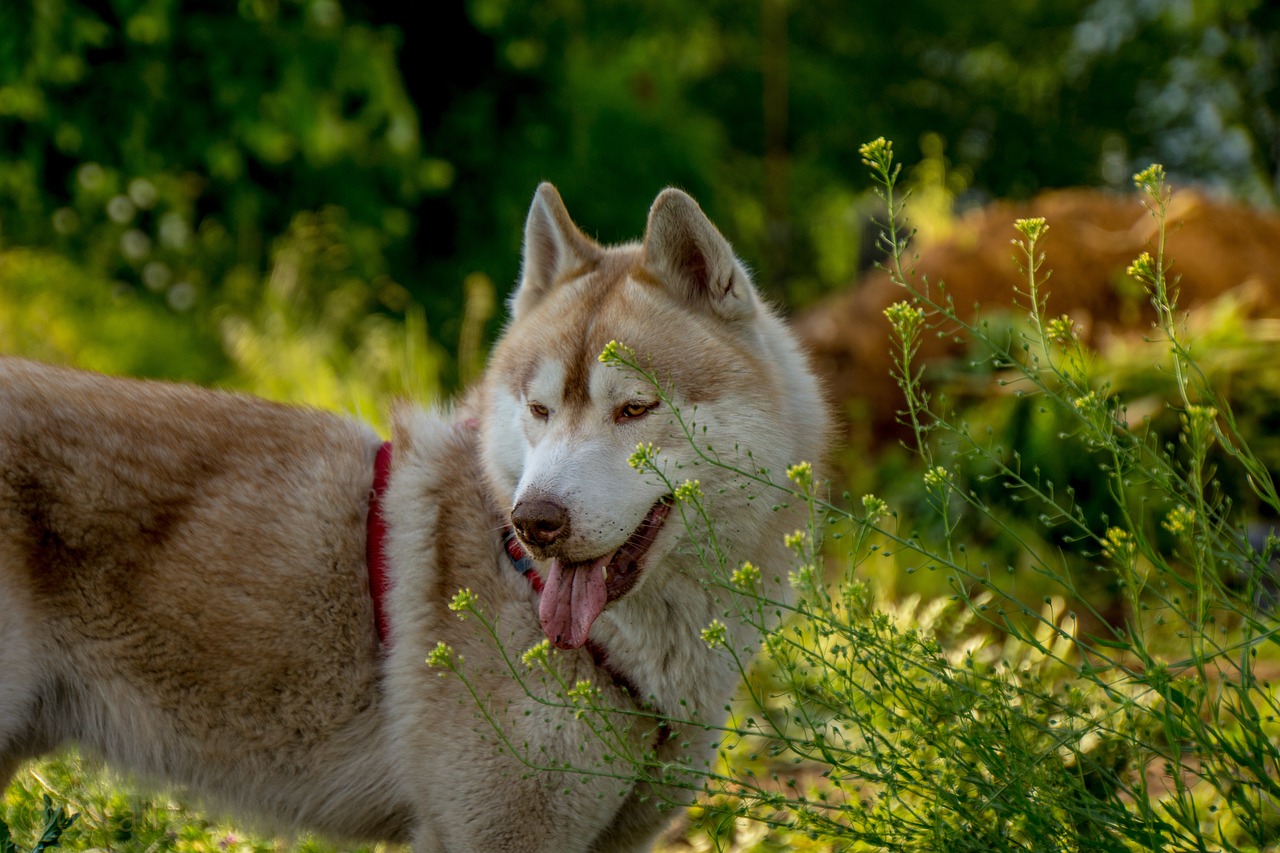
Physical Appearance
The Alaskan Husky is a breed that captivates everyone with its striking and robust physical features. One of the most notable characteristics is its thick double coat, which not only provides insulation against frigid temperatures but also adds to their majestic appearance. This coat can come in a variety of colors, including black, gray, red, and even agouti. The unique patterns and shades often make each dog look like a work of art, showcasing nature's brushstrokes in fur.
In addition to their beautiful coat, Alaskan Huskies have erect ears that stand tall and alert, giving them an expressive and attentive demeanor. Their eyes can be a striking blue, brown, or even one of each, which adds to their charm. These dogs have a well-proportioned body, with a strong and athletic build designed for endurance. They generally weigh between 35 to 65 pounds and stand about 20 to 24 inches tall at the shoulder, making them a medium to large-sized breed.
What truly sets the Alaskan Husky apart is its muscular build and powerful legs, which are essential for their original purpose as sled dogs. Their paws are large and webbed, allowing them to traverse snowy terrains with ease. This breed is built for speed and endurance, making them the ideal companions for those who enjoy outdoor adventures. Additionally, their long, bushy tails curl up over their backs, which adds to their distinctive silhouette.
To summarize the physical attributes of the Alaskan Husky, here’s a quick reference table:
| Characteristic | Description |
|---|---|
| Coat | Thick double coat, various colors and patterns |
| Ears | Erect and alert |
| Eyes | Blue, brown, or heterochromia (one of each) |
| Weight | 35 to 65 pounds |
| Height | 20 to 24 inches at the shoulder |
| Build | Muscular and athletic, designed for endurance |
Overall, the Alaskan Husky is not just a pretty face; their physical attributes are a testament to their history as working dogs. Their combination of strength, agility, and beauty makes them a remarkable breed that is sure to turn heads wherever they go.
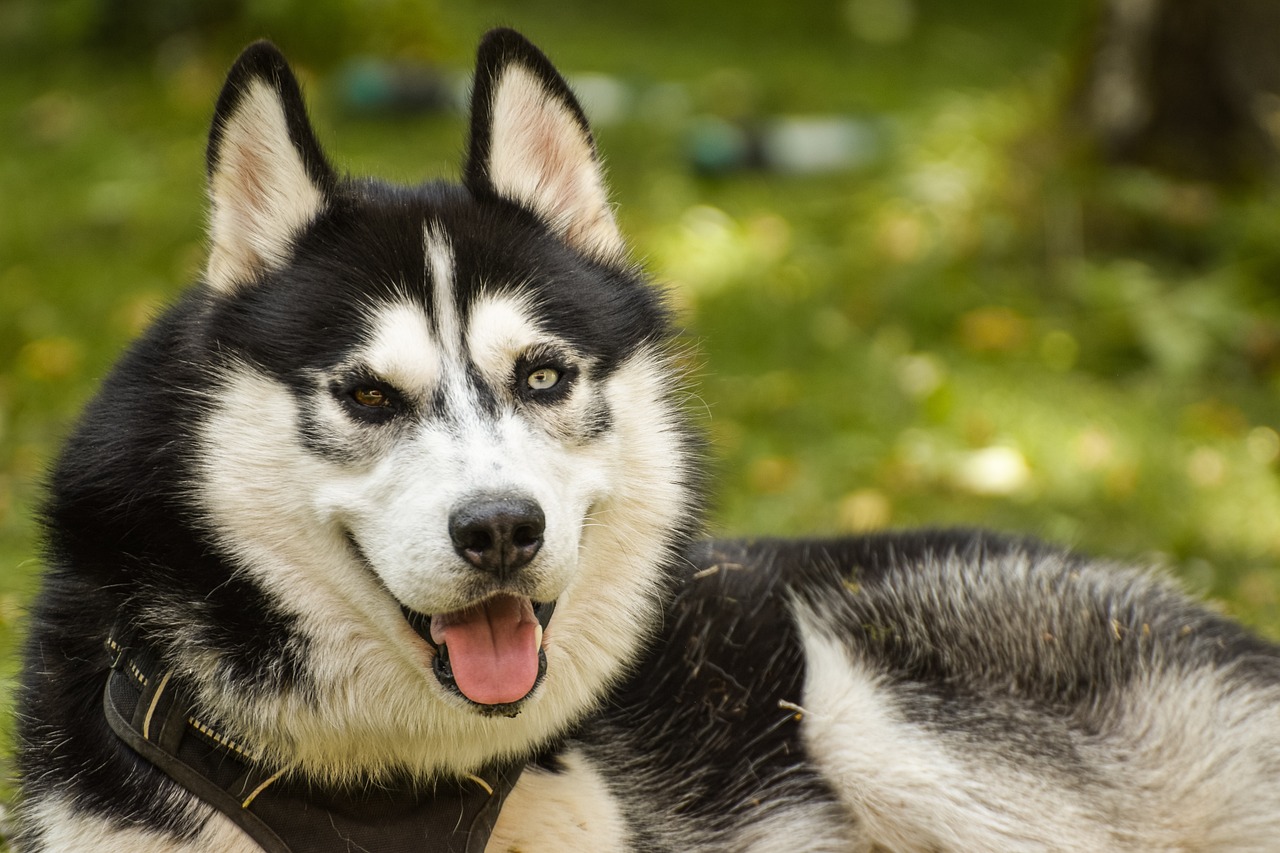
Temperament
The Alaskan Husky is not just a pretty face; these dogs come with a personality that can light up any room! Known for their friendly and outgoing nature, Alaskan Huskies thrive on companionship and love to be part of the family. Imagine a dog that greets you at the door with a wagging tail and a joyful bark, ready to join you on your next adventure. That’s the essence of an Alaskan Husky!
One of the standout traits of these dogs is their affectionate disposition. They are generally good with children and can easily become best friends with other animals in the household. This makes them excellent family pets. However, it’s important to remember that their playful energy can sometimes lead to roughhousing, so supervision with younger kids is always a good idea. After all, we want to keep both the kids and the dogs safe and happy!
But what about their energy levels? Oh boy, they are high! Alaskan Huskies are known for their boundless energy, which can be both a blessing and a challenge. They require regular exercise and mental stimulation to keep them from becoming bored and potentially destructive. Think of them as the energizer bunnies of the dog world. If you’re an active family who enjoys outdoor activities like hiking, running, or just playing fetch in the backyard, you’ll find a perfect partner in an Alaskan Husky.
With energy levels that can rival a toddler after a candy binge, these dogs need a daily outlet for their zest for life. Regular activities such as running, hiking, or even participating in dog sports like agility training can be incredibly beneficial. Not only does this help keep them physically fit, but it also provides the mental stimulation they crave. A tired Alaskan Husky is a happy Alaskan Husky!
When it comes to exercise, think of it as a non-negotiable part of your Husky's daily routine. Without adequate exercise, they may resort to digging, chewing, or other forms of mischief to keep themselves entertained. So, whether it’s a long walk in the park or a rigorous run, make sure to dedicate time each day to meet their exercise needs.
Another key aspect of their temperament is the importance of early socialization. Just like humans, dogs can be a bit shy or nervous when faced with new situations. Exposing your Alaskan Husky to various environments, people, and other animals at a young age will help them develop into well-rounded adults. Think of socialization as their passport to becoming a confident and adaptable dog!
In summary, the Alaskan Husky's temperament is a delightful blend of friendliness, energy, and social needs. They are the kind of dogs that can bring joy and adventure into your life, provided you can keep up with their enthusiastic spirit. So, are you ready to embark on a thrilling journey with an Alaskan Husky by your side?
- Are Alaskan Huskies good with children?
Yes, they are generally very friendly and affectionate towards children, making them great family pets. - How much exercise does an Alaskan Husky need?
They require at least 1-2 hours of exercise daily to keep them happy and healthy. - Do Alaskan Huskies shed a lot?
Yes, they shed heavily, especially during shedding seasons, so regular grooming is essential. - Can Alaskan Huskies live in apartments?
While they can adapt to apartment living, they need plenty of exercise and mental stimulation to thrive.
Energy Levels
When it comes to energy levels, the Alaskan Husky is nothing short of a powerhouse! These dogs are renowned for their boundless enthusiasm and playful spirit, making them a perfect match for active families and individuals who love the outdoors. If you’re looking for a furry companion to join you on your adventures, an Alaskan Husky might just be the right fit. They have an innate drive to run and play, which is a trait that harkens back to their roots as sled dogs.
Imagine a child running freely in a park, laughter echoing in the air; that’s the essence of an Alaskan Husky’s energy! They thrive on movement and require ample exercise to keep their spirits high and their bodies healthy. Without enough physical activity, these dogs can become bored, which may lead to destructive behaviors. Think of it like a pressure cooker—if the steam isn’t released, things can get messy! Regular exercise helps to release that pent-up energy and keeps your pup happy.
To ensure your Alaskan Husky is getting the exercise they need, aim for at least 1 to 2 hours of vigorous activity each day. This could include:
- Running
- Hiking
- Agility training
- Playing fetch or tug-of-war
Not only do these activities help burn off energy, but they also provide essential mental stimulation. Alaskan Huskies are intelligent dogs, and keeping their minds engaged is just as important as physical exercise. Incorporating games that challenge their problem-solving skills can help prevent boredom and promote a well-rounded, happy dog.
In conclusion, if you’re considering bringing an Alaskan Husky into your home, be prepared for an energetic and lively companion. They will require your commitment to a regular exercise routine, but the joy and companionship they bring to your life will make it all worthwhile. After all, who wouldn’t want a best friend that’s always ready for the next adventure?
- How much exercise does an Alaskan Husky need? Alaskan Huskies typically require 1 to 2 hours of vigorous exercise daily.
- Are Alaskan Huskies good with children? Yes, they are generally friendly and outgoing, making them excellent companions for children.
- Do Alaskan Huskies shed a lot? Yes, they shed heavily twice a year, requiring regular grooming during these periods.
- What are common health issues in Alaskan Huskies? Common health concerns include hip dysplasia and eye disorders.
Exercise Needs
When it comes to the Alaskan Husky, exercise isn't just a luxury—it's a necessity! These dogs are bursting with energy and require a significant amount of physical activity to stay happy and healthy. Imagine a child cooped up in a room all day; they would be restless and irritable. The same goes for Huskies! Without adequate exercise, they can become bored, leading to destructive behaviors like chewing furniture or digging up the yard.
On average, an Alaskan Husky needs at least 1 to 2 hours of exercise each day. This can be broken down into various activities that not only keep them physically fit but also mentally stimulated. Activities such as:
- Running: Huskies are natural runners. Taking them for a jog or letting them run freely in a secure area can fulfill their need for speed.
- Hiking: These dogs love the great outdoors! A hike through nature allows them to explore while getting their exercise.
- Agility Training: This is not only fun but also mentally challenging for them. Setting up an agility course in your backyard can be a great bonding experience.
Incorporating a variety of exercises is crucial. Just like how we get bored of the same old routine, Huskies can feel the same way. Mixing up their activities helps keep their interest piqued and their bodies engaged. Additionally, if you’re an active family that enjoys outdoor adventures, an Alaskan Husky can be the perfect companion. They thrive in environments where they can run and play, making them ideal for families who love outdoor activities.
However, it's important to remember that exercise isn't just about physical activity. Mental stimulation is equally important for these intelligent dogs. Engaging them in games that challenge their minds—like fetch or hide-and-seek—can be incredibly beneficial. Not only does this help to tire them out, but it also strengthens the bond between you and your furry friend.
Ultimately, meeting the exercise needs of an Alaskan Husky is essential for their well-being. A well-exercised Husky is a happy Husky, and a happy Husky makes for a joyful household. So, lace up those sneakers, grab a leash, and get ready for some fun-filled adventures with your Alaskan Husky!
- How much exercise does an Alaskan Husky need daily?
Alaskan Huskies typically require 1 to 2 hours of exercise each day to stay healthy and happy.
- Can Huskies live in apartments?
While Huskies can live in apartments, they need ample exercise and outdoor time to thrive. Regular walks and playtime are essential.
- What are some good activities for Huskies?
Activities like running, hiking, and agility training are excellent for Huskies, as they help burn off energy and keep them mentally stimulated.
- How can I mentally stimulate my Husky?
Engaging your Husky in games, puzzle toys, and training sessions can provide the mental challenge they need.
Socialization
Socialization is paramount for the Alaskan Husky, as it shapes their personality and behavior. These dogs are naturally friendly and outgoing, but without proper exposure to various environments and experiences, they may develop behavioral issues. Think of socialization as a puppy’s passport to the world; the more stamps they collect, the better equipped they are to handle different situations. Early socialization helps them grow into well-rounded adults who are comfortable around people, other animals, and diverse settings.
To ensure your Alaskan Husky becomes the best version of itself, it’s essential to start socializing them at a young age. This process should include:
- Introducing them to various people, including children, adults, and seniors.
- Exposing them to different animals, such as dogs, cats, and even livestock.
- Taking them on car rides to experience different sights and sounds.
- Visiting parks and dog-friendly places to encourage interaction with other dogs.
- Participating in puppy classes or training sessions to reinforce good behavior.
Remember, the goal is to create positive experiences during these interactions. Each new encounter should be fun and rewarding, helping your Husky associate new experiences with joy rather than fear. This will not only enhance their confidence but also reduce the likelihood of anxiety or aggression as they grow older.
Additionally, ongoing socialization is just as important as early exposure. Even as your Alaskan Husky matures, continue to introduce them to new situations. This could include varying your walking routes, visiting different parks, or attending dog events. The more experiences they have, the more adaptable and resilient they will become. Think of it like a muscle; the more you exercise it, the stronger it gets!
In conclusion, socialization is a lifelong commitment that significantly impacts your Alaskan Husky’s happiness and behavior. By investing time in their social development, you are not only enhancing their quality of life but also creating a harmonious environment for both your dog and your family.
1. When should I start socializing my Alaskan Husky?
It’s best to start socializing your Alaskan Husky as early as possible, ideally during their critical socialization period, which is between 3 to 14 weeks of age. However, it's never too late to begin socializing your dog.
2. How can I socialize my Alaskan Husky safely?
Introduce your Husky to new experiences gradually and always ensure that interactions are positive. Supervise playtime with other dogs, and avoid overwhelming them with too many new experiences at once.
3. What if my Alaskan Husky shows fear or aggression during socialization?
If your Husky shows signs of fear or aggression, it’s important to take a step back. Consult with a professional dog trainer or behaviorist who can provide guidance tailored to your dog's needs.
4. How often should I socialize my Alaskan Husky?
Socialization should be an ongoing process. Regularly expose your Husky to new experiences, people, and environments to keep them well-adjusted and confident.
Working Abilities
When you think of the Alaskan Husky, the image of a powerful, resilient dog pulling a sled through the snowy wilderness likely comes to mind. These dogs were originally bred for their incredible strength and endurance, making them exceptional working animals in harsh Arctic conditions. Their ability to work as a team and their natural instincts for pulling heavy loads have made them invaluable in various roles beyond just sledding.
Alaskan Huskies are not just pretty faces; they possess remarkable that are deeply ingrained in their genetics. Their muscular build, combined with their thick double coat, allows them to thrive in extreme cold while performing demanding tasks. These dogs can run for hours on end, making them ideal for long-distance sledding and other endurance-based activities. In fact, many of them participate in competitive sled dog races, showcasing their speed and stamina.
But their talents don't stop at sledding. Alaskan Huskies are also utilized in search-and-rescue operations due to their keen sense of smell and ability to navigate challenging terrains. They can be trained to locate missing persons in various environments, from snowy mountains to dense forests. This versatility highlights their intelligence and adaptability, traits that are essential for any working dog.
Moreover, their friendly and sociable nature means they can work well with humans and other animals. This makes them suitable for various roles, including therapy and service dogs. With proper training and socialization, an Alaskan Husky can become a loyal companion, assisting individuals with disabilities or providing emotional support.
In summary, the working abilities of the Alaskan Husky are not only a testament to their physical prowess but also to their intelligence and adaptability. Whether they're pulling sleds, assisting in search-and-rescue missions, or serving as therapy dogs, these remarkable animals prove time and again that they are much more than just pets; they are true working partners.
- What is the average lifespan of an Alaskan Husky?
Alaskan Huskies typically live between 12 to 15 years, depending on their health and care.
- Are Alaskan Huskies good with children?
Yes, they are generally friendly and good with children, making them excellent family pets.
- How much exercise do Alaskan Huskies need?
They require a significant amount of exercise—at least 1 to 2 hours daily—to keep them happy and healthy.
- Do Alaskan Huskies shed a lot?
Yes, they shed heavily, especially during shedding seasons, so regular grooming is necessary.
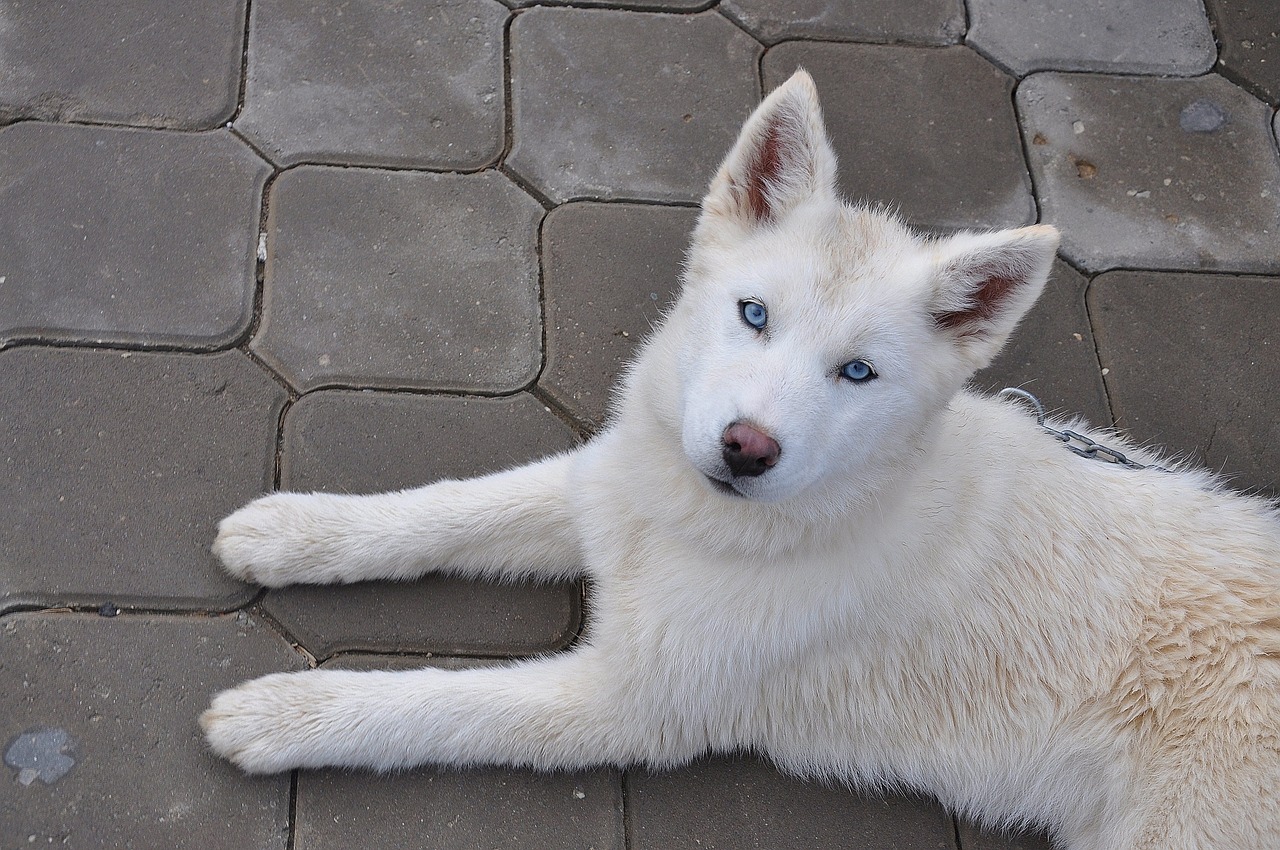
Grooming Requirements
Maintaining an Alaskan Husky's coat is not just about keeping them looking good; it's also vital for their health and comfort. These dogs have a thick double coat that insulates them against harsh Arctic conditions, but this beautiful fur requires regular attention. Grooming is especially important during shedding seasons, which occur twice a year, typically in spring and fall. During these times, you might find yourself covered in fur after a grooming session, but fear not! It's all part of the process of keeping your furry friend happy and healthy.
To keep your Alaskan Husky's coat in optimal condition, you should establish a grooming routine that includes frequent brushing. A slicker brush or an undercoat rake is ideal for managing their thick fur and removing loose hair. Aim for at least two to three grooming sessions per week during non-shedding periods, increasing to daily brushing during shedding seasons. This not only helps control shedding but also reduces the likelihood of matting, which can be uncomfortable for your dog. Plus, regular grooming is a great way to bond with your pet!
When it comes to bathing, less is more for Alaskan Huskies. Their coat is designed to repel dirt and moisture, so unless they roll in something particularly nasty, you should limit baths to every few months. Overbathing can strip their coat of essential oils, leading to dryness and irritation. Instead, focus on brushing to keep their coat clean and healthy. If your Husky does need a bath, use a gentle dog shampoo that won't irritate their skin.
Here’s a quick overview of the grooming requirements for your Alaskan Husky:
| Grooming Task | Frequency | Tools Needed |
|---|---|---|
| Brushing | 2-3 times a week (daily during shedding) | Slicker brush, undercoat rake |
| Bathing | Every 2-3 months | Gentle dog shampoo |
| Nail Trimming | Monthly | Nail clippers or grinder |
| Ear Cleaning | As needed | Cotton balls, vet-recommended ear cleaner |
In addition to brushing and bathing, don’t forget about other grooming tasks like nail trimming and ear cleaning. Keeping your Husky's nails trimmed is essential to prevent discomfort and potential injuries; aim to do this monthly. Their ears should also be checked regularly for dirt and wax buildup. If you notice any redness or odor, consult your veterinarian for advice.
By adhering to these grooming requirements, you'll not only keep your Alaskan Husky looking fabulous but also contribute to their overall well-being. Regular grooming can catch potential health issues early, ensuring that your furry companion remains happy and healthy for years to come.
Here are some common questions that new Alaskan Husky owners often have regarding grooming:
- How often should I brush my Alaskan Husky? - Ideally, you should brush them 2-3 times a week, increasing to daily during shedding seasons.
- Can I bathe my Husky frequently? - No, overbathing can strip their coat of natural oils. Limit baths to every few months unless necessary.
- What tools do I need for grooming? - A slicker brush, undercoat rake, nail clippers, and a gentle dog shampoo are essential.
- How can I tell if my Husky's ears need cleaning? - Check for dirt, wax buildup, and any unusual odors. If you notice any issues, consult your vet.
Shedding
One of the most notable traits of the Alaskan Husky is its shedding pattern. These dogs are known for their thick double coat, which, while beautiful and functional, means they shed quite a bit—especially during certain times of the year. in Alaskan Huskies typically occurs twice a year, during the spring and fall, when they transition between their winter and summer coats. This seasonal shedding can be quite dramatic, leading to a significant amount of fur being left behind in your home.
During shedding seasons, you may find yourself covered in Husky hair just by being in the same room! To manage this, it’s essential to establish a regular grooming routine. Frequent brushing during these periods can help keep the shedding under control and ensure that your dog's coat remains healthy and shiny. A good rule of thumb is to brush your Alaskan Husky at least two to three times a week during non-shedding seasons and daily during shedding seasons.
Here’s a quick overview of the grooming needs during shedding periods:
| Grooming Task | Frequency | Purpose |
|---|---|---|
| Brushing | Daily during shedding season | Reduces loose fur and prevents matting |
| Bathing | Every few months | Maintain coat health without stripping oils |
| Professional Grooming | As needed | Deep cleaning and de-shedding |
Another important aspect to consider is the type of brush you use. A slicker brush or an undercoat rake can be particularly effective for managing the dense fur of an Alaskan Husky. These tools help remove loose hair and prevent mats, keeping your dog's coat looking its best. Additionally, regular grooming not only helps manage shedding but also provides an excellent opportunity to check for any skin issues or parasites that may be lurking beneath that beautiful fur.
In summary, while shedding is a natural part of being an Alaskan Husky owner, understanding how to manage it can make your life a lot easier. By committing to a regular grooming routine and using the right tools, you can keep your home fur-free and your Alaskan Husky looking fabulous!
- How often should I groom my Alaskan Husky? During shedding seasons, daily grooming is recommended, while two to three times a week is sufficient during non-shedding periods.
- What type of brush is best for an Alaskan Husky? A slicker brush or an undercoat rake works well to manage their thick double coat.
- Can I bathe my Alaskan Husky frequently? It's best to bathe them sparingly, as too much bathing can strip their coat of natural oils.
- What should I do if my Husky has excessive shedding? If shedding seems excessive outside of the normal seasonal pattern, consult a veterinarian to rule out any underlying health issues.
Bathing
This article explores the unique traits of the Alaskan Husky, including its physical attributes, temperament, and suitability as a working dog or family pet.
Alaskan Huskies are known for their striking looks, featuring a thick double coat, erect ears, and expressive eyes. Their size and build are well-suited for endurance and cold climates.
The Alaskan Husky is known for its friendly and outgoing nature. These dogs thrive on companionship and are generally good with children and other animals, making them excellent family pets.
With high energy levels, Alaskan Huskies require regular exercise and mental stimulation. Their playful demeanor makes them ideal for active families who enjoy outdoor activities.
Daily exercise is crucial for Alaskan Huskies to prevent boredom and destructive behavior. Activities like running, hiking, or agility training are beneficial for their physical and mental health.
Early socialization is important for Alaskan Huskies to develop into well-rounded dogs. Exposure to various environments, people, and other animals helps them adapt and behave appropriately.
Originally bred for sledding, Alaskan Huskies possess remarkable endurance and strength. Their working abilities make them valuable in various tasks, including dog sledding and search-and-rescue operations.
Maintaining an Alaskan Husky's coat requires regular grooming, especially during shedding seasons. Understanding their grooming needs ensures they remain healthy and comfortable.
Alaskan Huskies shed heavily twice a year, requiring more frequent brushing during these periods. Regular grooming helps manage shedding and keeps their coat in optimal condition.
When it comes to your Alaskan Husky, it's important to strike a balance. These dogs have a unique double coat that serves as insulation against the cold and protects their skin. Frequent bathing can strip away the natural oils that keep their coat healthy and shiny. Instead of making it a regular routine, consider bathing your Husky only when necessary—perhaps after a particularly muddy adventure or if they have rolled in something unpleasant.
Generally, a good brushing routine is often sufficient to keep them clean. However, if you decide to bathe your Alaskan Husky, here are a few tips to keep in mind:
- Use a dog-specific shampoo: Human shampoos can be too harsh for their skin.
- Rinse thoroughly: Make sure to wash out all the shampoo to prevent irritation.
- Dry properly: Use a towel to dry them off, and avoid using a hairdryer, as the noise can be stressful.
By following these guidelines, you can ensure that your Alaskan Husky stays clean without compromising the health of their coat.
Like all breeds, Alaskan Huskies are prone to specific health issues. Regular veterinary check-ups and a healthy diet are essential for their overall well-being.
Some common health concerns in Alaskan Huskies include hip dysplasia and eye disorders. Awareness of these conditions can help owners take preventive measures.
A balanced diet is crucial for maintaining an Alaskan Husky's energy levels and overall health. Owners should consult with veterinarians to determine the best nutritional plan for their dog.
Q: How often should I bathe my Alaskan Husky?
A: It’s best to bathe them only when necessary, perhaps every few months, or if they get particularly dirty.
Q: Can I use human shampoo on my Husky?
A: No, it's recommended to use a shampoo specifically formulated for dogs to avoid skin irritation.
Q: How can I manage shedding?
A: Regular brushing, especially during shedding seasons, can help manage the amount of fur in your home.
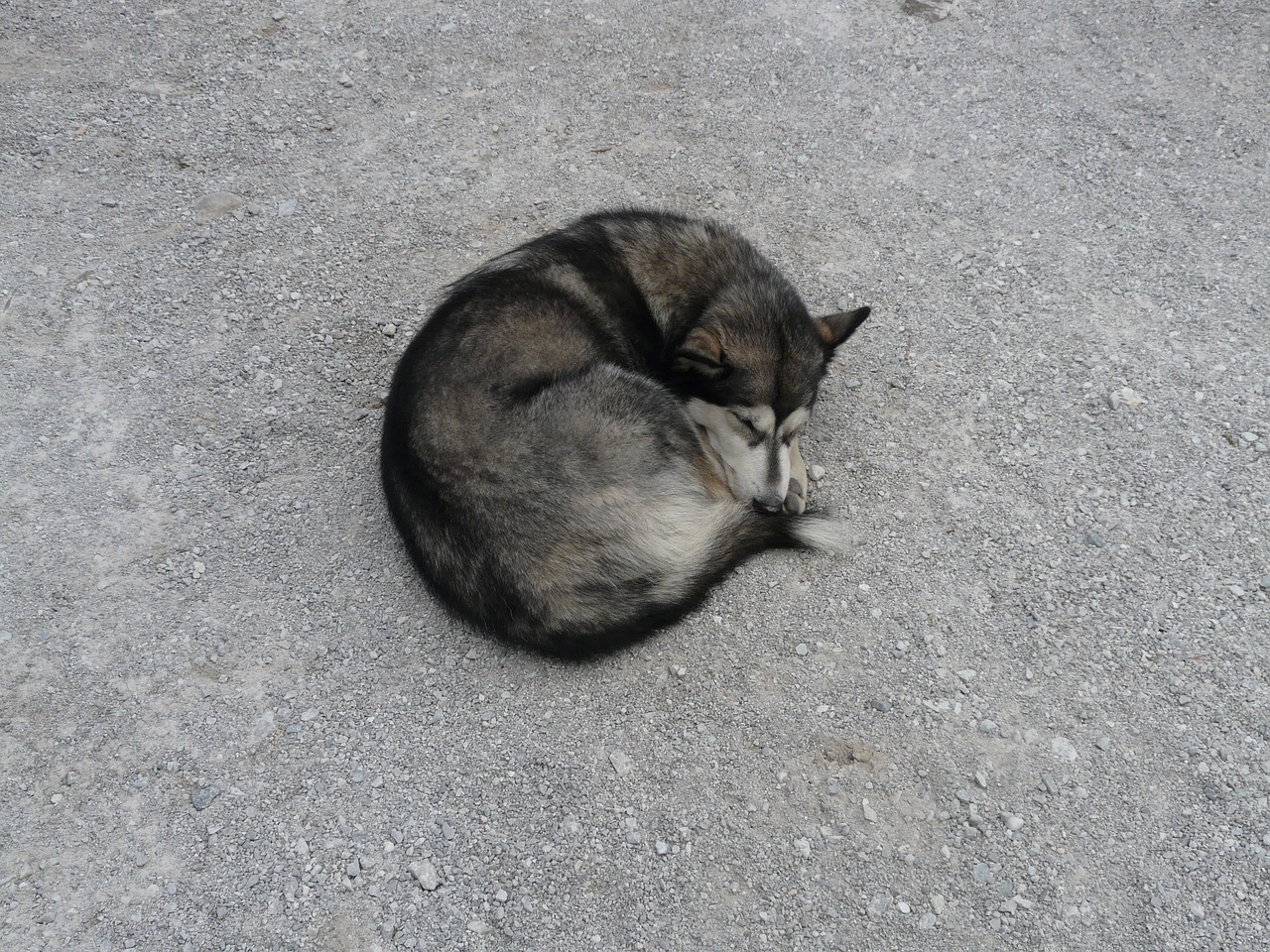
Health Considerations
When it comes to the Alaskan Husky, being aware of their health considerations is paramount for any owner. Just like humans, these magnificent dogs are susceptible to certain health issues that can affect their quality of life. Regular veterinary check-ups, a balanced diet, and proper exercise are essential components of keeping your furry friend healthy and happy.
One of the most common health concerns for Alaskan Huskies is hip dysplasia. This genetic condition occurs when the hip joint doesn't fit snugly into the hip socket, leading to arthritis and pain over time. It's crucial to monitor your dog for signs of discomfort, such as limping or reluctance to engage in physical activities. If you notice any of these symptoms, consult your veterinarian immediately for an evaluation.
Another issue that can arise is eye disorders, including cataracts and progressive retinal atrophy (PRA). These conditions can lead to vision impairment or even blindness if left untreated. Regular eye examinations are vital, especially as your Alaskan Husky ages. Early detection can make a significant difference in managing these conditions.
Additionally, Alaskan Huskies can be prone to certain skin issues, such as allergies or hot spots. These can be caused by environmental factors or food sensitivities. Keeping an eye on your dog's skin condition and consulting with a vet if you notice excessive scratching or irritation is a good practice. A well-balanced diet can also help maintain skin health and prevent allergic reactions.
To ensure your Alaskan Husky remains in peak condition, it's essential to focus on their dietary needs. A balanced diet rich in proteins, fats, and carbohydrates will help maintain their energy levels and overall health. Here’s a simple table to guide you on what to include in their diet:
| Food Type | Benefits |
|---|---|
| High-Quality Protein | Supports muscle growth and energy levels |
| Healthy Fats | Provides energy and supports skin health |
| Fruits & Vegetables | Rich in vitamins and antioxidants |
| Whole Grains | Good source of energy and fiber |
It's also beneficial to consult with your veterinarian to determine the best nutritional plan tailored to your dog's specific needs. This way, you can ensure that your Alaskan Husky gets all the nutrients necessary for a long, healthy life.
In summary, while Alaskan Huskies are generally robust dogs, being proactive about their health can make a world of difference. By keeping an eye out for common issues, maintaining a balanced diet, and ensuring regular veterinary visits, you can help your furry companion lead a happy and fulfilling life.
- What are the common health problems in Alaskan Huskies? Alaskan Huskies are prone to hip dysplasia, eye disorders, and skin allergies.
- How often should I take my Alaskan Husky to the vet? Regular check-ups are recommended at least once a year, but more frequent visits may be necessary for older dogs or those with health issues.
- What is the best diet for an Alaskan Husky? A balanced diet rich in high-quality proteins, healthy fats, fruits, vegetables, and whole grains is ideal for their health and energy needs.
- How can I manage shedding in my Alaskan Husky? Regular grooming and brushing, especially during shedding seasons, can help manage their coat and minimize shedding around your home.
Common Health Issues
The Alaskan Husky, like any other breed, is susceptible to certain health issues that potential owners should be aware of. While these dogs are generally healthy, understanding their predisposition to specific conditions can help in early detection and management. One of the most common concerns is hip dysplasia, a genetic condition where the hip joint doesn't fit into the hip socket properly. This can lead to arthritis and discomfort, making it crucial for owners to monitor their dog’s mobility and consult a veterinarian if any signs of pain or stiffness arise.
Another prevalent issue is eye disorders, particularly cataracts and progressive retinal atrophy (PRA). These conditions can affect a Husky's vision, leading to blindness if left untreated. Regular veterinary check-ups can help in catching these issues early, allowing for timely intervention. It's also important to note that Alaskan Huskies may be prone to certain skin conditions, especially if they are not properly groomed. Regular brushing not only keeps their coat healthy but also allows for the early detection of any unusual lumps or irritations on their skin.
To give you a clearer picture, here’s a quick overview of some common health issues associated with Alaskan Huskies:
| Health Issue | Description | Preventive Measures |
|---|---|---|
| Hip Dysplasia | A genetic condition affecting the hip joint. | Regular vet check-ups and maintaining a healthy weight. |
| Eye Disorders | Conditions like cataracts and PRA that affect vision. | Routine eye exams and monitoring for vision changes. |
| Skin Conditions | Issues that arise from poor grooming or allergies. | Regular grooming and maintaining a clean living environment. |
Being proactive about your Alaskan Husky's health can significantly enhance their quality of life. Regular veterinary visits, a balanced diet, and proper exercise are essential in keeping these dogs happy and healthy. Remember, just like us, they thrive on routine and care, so it’s vital to stay informed and engaged in their health journey.
- What is the average lifespan of an Alaskan Husky? Typically, Alaskan Huskies live between 12 to 15 years, depending on their health and care.
- Do Alaskan Huskies require a lot of grooming? Yes, they have a thick double coat that requires regular brushing, especially during shedding seasons.
- Are Alaskan Huskies good with children? Absolutely! They are known for their friendly nature and typically get along well with children and other pets.
- How much exercise do Alaskan Huskies need? They are high-energy dogs that require at least an hour of exercise daily to keep them healthy and happy.
Dietary Needs
The dietary needs of an Alaskan Husky are crucial for maintaining their high energy levels and overall health. These dogs are not just beautiful; they are also athletes at heart, requiring a well-balanced diet to fuel their active lifestyles. A typical Alaskan Husky's diet should be rich in high-quality proteins, healthy fats, and essential vitamins and minerals. This is because their bodies are built for endurance, and they need the right nutrients to support their muscular build and energy demands.
When it comes to choosing the right food, it's important to look for dog food that lists meat as the first ingredient. This ensures that your Husky is getting enough protein to keep their muscles strong. Additionally, carbohydrates are also essential, but they should come from wholesome sources like brown rice or sweet potatoes rather than fillers. A good rule of thumb is to choose a dog food that contains at least 30% protein and 20% fat for optimal performance.
Moreover, hydration is another critical aspect of their diet. Alaskan Huskies are prone to dehydration, especially after vigorous exercise. Always provide fresh water, and consider incorporating wet food into their diet, which can help increase their overall water intake. Consulting with a veterinarian is also advisable to tailor a specific dietary plan that meets your dog's unique needs, taking into account factors like age, weight, and activity level.
Here’s a simple table summarizing the key components of an ideal diet for your Alaskan Husky:
| Diet Component | Recommended Percentage |
|---|---|
| Protein | 30% or more |
| Fat | 20% or more |
| Carbohydrates | Varies (whole grains preferred) |
| Vitamins & Minerals | Essential for overall health |
In conclusion, providing a balanced diet for your Alaskan Husky is not just about filling their bowl; it's about ensuring they have the energy and nutrients they need to thrive. Regularly monitoring their weight and adjusting their food intake based on their activity level can help keep them in top shape. Remember, a healthy dog is a happy dog!
- What type of food should I feed my Alaskan Husky? Look for high-quality dog food with meat as the first ingredient, and ensure it has a good balance of protein and fat.
- How much should I feed my Alaskan Husky? The amount varies based on age, weight, and activity level. Consult your vet for personalized recommendations.
- Can I give my Alaskan Husky human food? Some human foods are safe, but always check with your veterinarian before introducing new items to their diet.
- How often should I feed my Alaskan Husky? Most adult Huskies do well with two meals a day, while puppies may require more frequent feeding.
Frequently Asked Questions
- What is the typical size and weight of an Alaskan Husky?
Alaskan Huskies are medium to large-sized dogs, typically weighing between 35 to 65 pounds. Their height can range from 20 to 26 inches at the shoulder, depending on their lineage and gender. These dogs are built for endurance and strength, making them well-suited for their original roles as sled dogs.
- Are Alaskan Huskies good with children?
Absolutely! Alaskan Huskies are known for their friendly and outgoing temperament, which makes them great companions for children. They thrive on social interaction and generally get along well with kids and other pets, making them ideal family dogs.
- How much exercise do Alaskan Huskies need?
Alaskan Huskies are high-energy dogs that require a significant amount of exercise—typically at least 1 to 2 hours a day. Activities like running, hiking, and playing fetch are excellent ways to keep them physically and mentally stimulated, preventing boredom and destructive behaviors.
- What are the grooming needs of an Alaskan Husky?
Grooming an Alaskan Husky is essential, especially during shedding seasons when they lose their undercoat. Regular brushing, at least once a week, is recommended to manage shedding and keep their coat healthy. However, bathing should be done sparingly to maintain their natural oils.
- What health issues should I be aware of with Alaskan Huskies?
Like many breeds, Alaskan Huskies can be prone to certain health issues, such as hip dysplasia and eye disorders. Regular veterinary check-ups and a balanced diet are crucial for their overall health and well-being. Being proactive about their health can help catch any issues early.
- What type of diet is best for an Alaskan Husky?
A balanced diet rich in protein and healthy fats is essential for maintaining the energy levels of an Alaskan Husky. It's best to consult with a veterinarian to determine the most appropriate nutritional plan tailored to your dog's specific needs, age, and activity level.
- Can Alaskan Huskies be trained easily?
While Alaskan Huskies are intelligent, they can also be quite independent and stubborn. Early socialization and consistent training using positive reinforcement methods are key to successfully training them. Keeping training sessions fun and engaging will help maintain their interest and cooperation.





